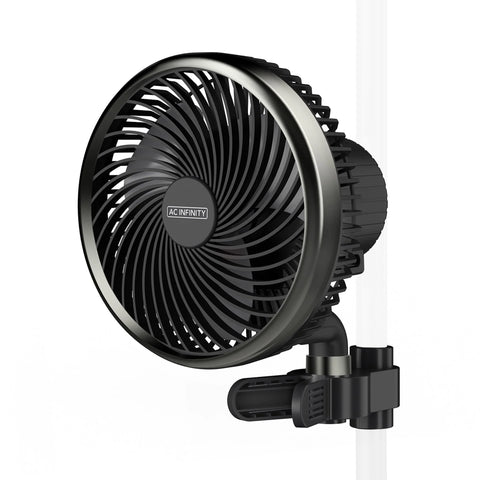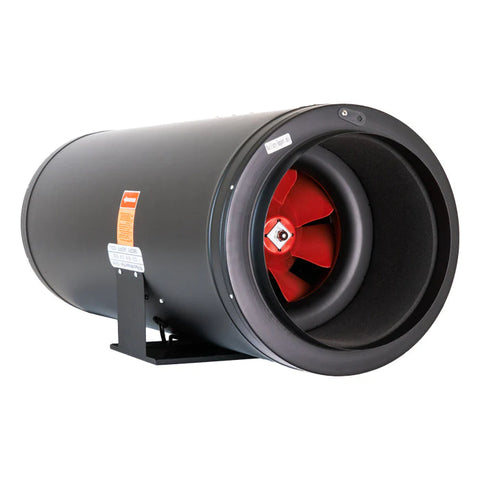
Cannabis cultivation isn’t just about planting seeds and providing the necessary nutrients; it also entails meticulous care of the plants.
Like any other crop, a harvest's success relies on maintaining the plants in the pink of health. You want robust plants to withstand stress and yield high-quality buds.
But cannabis growers worry about one problem: bud rot. Bud rot poses a substantial risk of jeopardizing meticulously tended gardens, leading to financial setbacks and compromised harvests. In maintaining cannabis plant health, preventing and mitigating the impact of bud rot emerges as a critical aspect for growers wanting a successful harvest.
What is Bud Rot?
 Photo courtersy extension.usu.edu
Photo courtersy extension.usu.edu
Bud rot, also scientifically known as botrytis, is a fungal infection that poses a significant threat to cannabis plants. This fungal menace can potentially compromise the plant's overall health, targeting buds and, if left unchecked, leading to severe consequences for the entire growth cycle.
The implications of bud rot extend beyond the visible signs of infection. Beyond the immediate threat to the affected buds, the fungus can disrupt the plant's vascular system, hindering water and nutrient delivery. The economic and quality impacts are substantial, with compromised yields and a potential decline in the overall quality of harvested buds. How bud rot affects quality and quantity is a primary concern for growers.
Bud Rot Causes
Bud rot breeds in environments conducive to fungal growth. Two critical environmental factors are pivotal: poor air circulation and high moisture levels. In spaces where air struggles to move freely, and excess moisture lingers, the conditions become ripe for the development and spread of the botrytis fungus. Growers must be aware of these factors, as addressing them forms the foundation for effective bud rot prevention.
Certain characteristics of cannabis plants elevate the risk of bud rot, making preventive measures even more crucial. While desirable for their yield potential, larger buds become vulnerable as they trap and accumulate moisture within their dense structure. Additionally, densely arranged plants, especially in proximity to each other, create an environment conducive to the rapid spread of the fungus. Understanding these risk factors allows growers to adjust their gardening practices to mitigate the conditions that invite bud rot into the garden.
Bud Rot Symptoms
Detecting bud rot in its early stages is challenging due to its stealthy progression. The initial development occurs on the plant's stem, manifesting as a mushy and gray appearance. Visual cues become more apparent as the infection advances, with wilted, yellow, and burnt leaves signaling a deeper issue within the plant.
The threat of bud rot is further complicated by its tendency to work from the inside out. The fungus takes hold within the plant, making it invisible to the naked eye. Tracing its progression requires vigilant observation, particularly between the cracks and crevices of suspect buds. This internal progression emphasizes the necessity of a proactive approach, as delayed detection can lead to irreversible damage and economic loss.
What to Do When Bud Rot Strikes
The most important thing to remember when addressing bud rot is to act fast. You want to prevent a further spread and save what can be saved.
When bud rot is detected, immediately remove infected buds and plants. Carefully extract and isolate affected plants to prevent spores from spreading to healthy areas. Wear gloves during removal and use sealed containers for disposal to minimize the risk of cross-contamination.
Sanitize any equipment used in the process, such as trimmers, to prevent accidental transmission.
Remember also to exercise caution when addressing bud rot during the flowering stage. Some of you might be tempted to use fungicides, neem oil, or sulfur, which may affect the bud's appearance, smell, and taste when harvested. If your garden caters to dispensaries and other businesses, weigh the possible side effects on your harvest before using these chemical interventions.
How to Prevent Bud Rot
As they say, prevention is better than the cure. The same can be said with bud rot. Putting the proper interventions in place can help prevent it from developing in the first place. So, how can you prevent bud rot?
The Importance of Vigilance in Plant Care
Vigilance is a grower's best defense against bud rot. Regular, daily inspections of your plants are crucial for early detection of any signs of this disease. Pay close attention to the stem appearance, leaves, and buds, and be proactive in addressing any anomalies. Also, eliminate any potential sources of bud rot, such as stagnant water and clogged drains, to maintain a healthy growing environment.
Optimizing Air Circulation with Fans

Ensuring a constant flow of clean air is vital in preventing bud rot. A fan can be a valuable tool in your arsenal, promoting proper air circulation and dispersing moisture-laden air that can foster fungal growth. Such fans are especially beneficial for table-grown plants, aiding in the maintenance of a conducive environment for healthy plant growth.
Effective Humidity Management
Controlling humidity is a critical aspect of bud rot prevention. Utilize dehumidifiers to efficiently reduce excess moisture in the air. By maintaining optimal humidity levels, you can create conditions that are unfavorable for bud rot, protecting your plants from this potentially devastating disease.
Ensure Adequate Plant Spacing
The right amount of space between plants can make a significant difference. Adequate spacing ensures better air circulation and reduces the likelihood of bud rot spreading from one plant to another. Overcrowded gardens can hinder air flow and create microenvironments where bud rot can thrive.
Advanced Air Movement with Inline Fans
Facilitating unrestricted air movement between and around plants is vital. Indoor Growers create an environment less favorable for bud rot by allowing air to flow freely. Thoughtful placement and spacing contribute to optimal air circulation, acting as a natural barrier against the onset of the fungus. Ventilation systems are a good investment here, as they can pull out stale, moist air and bring in fresh air.
Final Thoughts
Bud rot might be one of the biggest threats to cannabis growers. The inability to detect immediately has severe repercussions for businesses. Not only do you lose income, but it also can waste your investment to grow these plants. But with the proper knowledge to prevent, detect, and treat bud rot, one can easily prevent further damage from happening.
Meticulousness is the key to preventing bud rot. Integrate the prevention tips into your gardening routine, and you get a resilient garden that can withstand bud rot and other garden challenges and, more importantly, a bountiful harvest.





